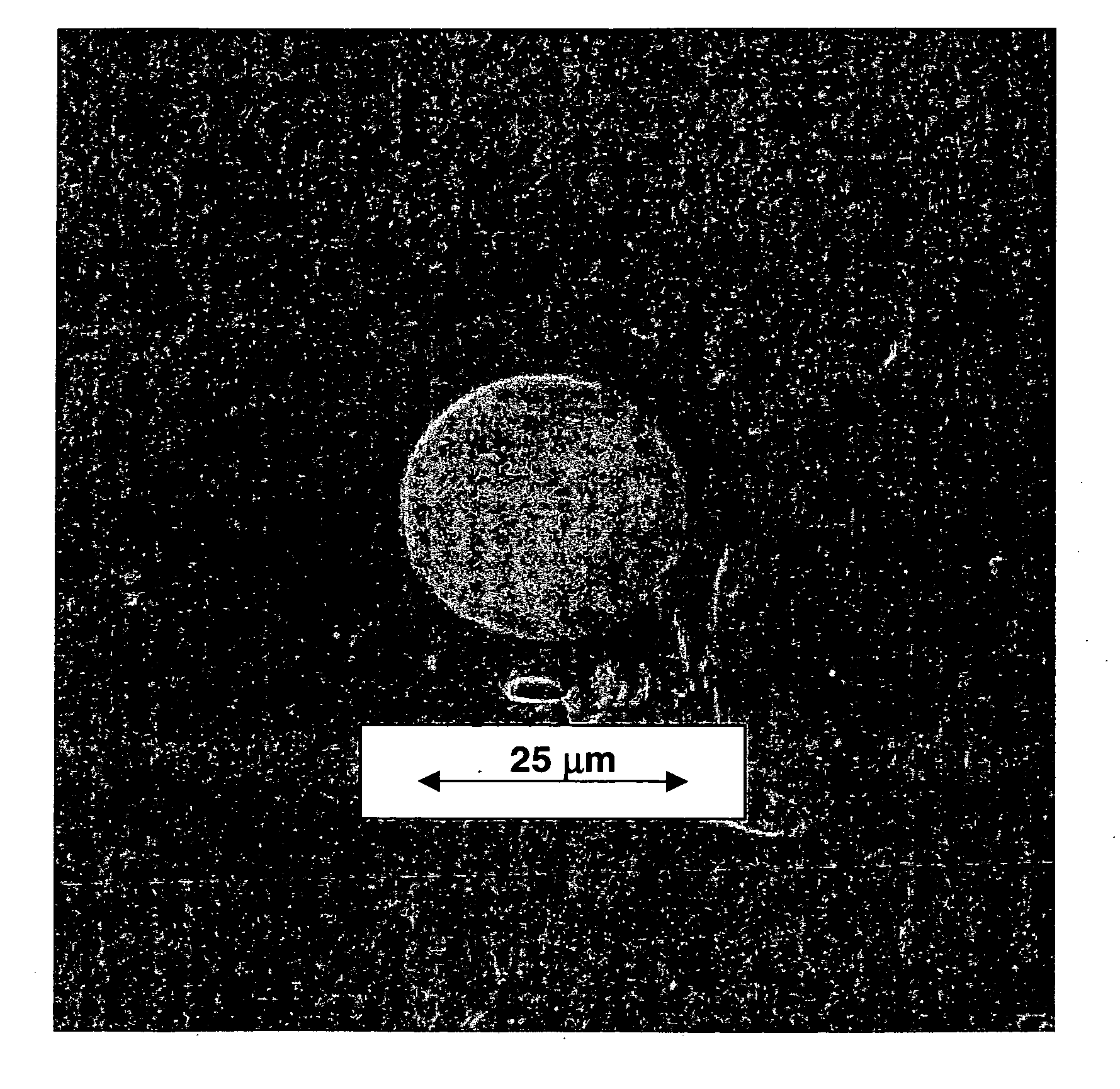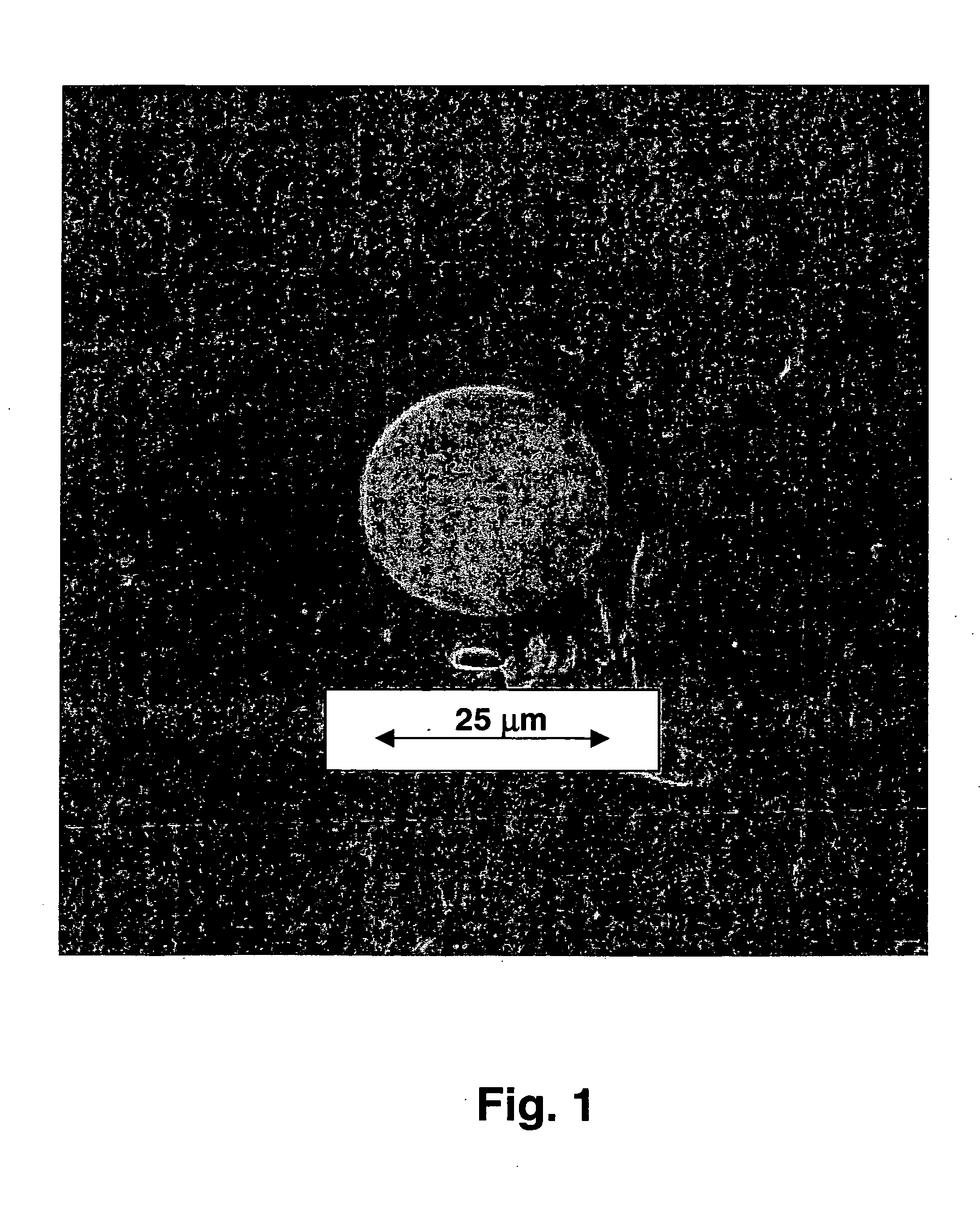Engineered glasses for metallic glass-coated wire
a technology of glass coating and engineering glasses, applied in the field of metal wire, can solve the problems of high temperature of glass coating, and high cooling rate of taylor method for metal coating wire production, etc., and achieve the effects of improving magnetic response, high signal amplitude, and increasing gating distan
- Summary
- Abstract
- Description
- Claims
- Application Information
AI Technical Summary
Benefits of technology
Problems solved by technology
Method used
Image
Examples
example 1
[0061] An ingot composed of an amorphous-forming alloy is prepared by loading the appropriate weights of constituent elements into a quartz tube that is sealed at one end. The other end of this quartz tube is connected to a pressure-vacuum system to allow evacuation and back-filling with Ar gas several times to ensure a low oxygen Ar atmosphere within the quartz tube. Next, the closed end of the quartz tube in which the elements reside is introduced into a high frequency induction heating coil. With the application of radio frequency (“r.f.”) power, the elements inside the tube are caused to heat and melt into a stirred, homogeneous alloy body. When the r.f. power is shut off, the alloy body is allowed to cool to room temperature in the Ar atmosphere. Once cooled, the same alloy body is inserted into the bottom of a vertically disposed glass tube, having 6 mm diameter, that is sealed at the lower end. The upper end of this glass tube is connected to a pressure-vacuum system to allow...
example 2
[0065] Amorphous glass-coated wire is prepared by the procedure described in Example 1. The microwire has an Fe77.5B15Si7.5 amorphous alloy core that is under tensile stress. It has a glass coating consisting essentially of a medium expansion alkali borosilicate having an approximate composition:
ConstituentWeight %SiO272B2O312Al2O37Na2O6K202CaO1Working Point1140°C.Annealing Pt.570°C.Elastic Modulus80GPaαgl (Annealing pt. - 25° C.)7.0 ppm °C−1.
[0066] The working point of this glass is at the low end of allowed temperatures since the liquidus temperature of the alloy is 1,230° C.
TABLE IVStresses in the metallic core and glass coatingas a function of the fiber geometry.αaαglEaEglppmppmdadfibσaσglGPaGPa° C−1.° C−1.μmμmMPaMPa4200808.07.05.025.0−14565200808.07.05.020.0−13796200808.07.010.015.0−5343
[0067] In this example the metallic core stress is small and can approach zero as the fiber diameter decreases while holding the metal diameter constant, or simultaneously.
example 3
[0068] Amorphous glass-coated wire is prepared using the procedure described in Example 1. The microwire has a Co66Fe4Ni1B14Si15 amorphous alloy core that is under low stress, since this alloy has nearly zero magnetostriction. Components of the glass-coated wire are described below:
Glass
[0069] Soda-lime silicate container glass—approximate composition:
ConstituentWeight %SiO272B2O3—Al2O31Na2O14K20—CaO10MgO3Working Pt.1,035°C.Annealing Pt.560°C.Elastic Modulus70GPaα(Annealing pt. - 25° C. )10.3 ppm °C−1.
[0070] Alloy
Liquidus1,080°C.E100GPaαa12.7 ppm °C−1.
[0071] Soda-lime silicate glass works well for this alloy as it has a lower working range, consistent with the low liquidus temperature of CO66Fe4Ni1B14Si15. Furthermore, the thermal contraction coefficient more closely matches that of the alloy.
TABLE VStresses in the metallic core and glass coatingas a function of the fiber geometry.αaαglEaEglppmppmdadfibσaσglGPaGPa° C−1.° C−1.μmμmMPaMPa71007012.710.315.020.0−688781007012.710...
PUM
| Property | Measurement | Unit |
|---|---|---|
| Fraction | aaaaa | aaaaa |
| Fraction | aaaaa | aaaaa |
| Fraction | aaaaa | aaaaa |
Abstract
Description
Claims
Application Information
 Login to View More
Login to View More - R&D
- Intellectual Property
- Life Sciences
- Materials
- Tech Scout
- Unparalleled Data Quality
- Higher Quality Content
- 60% Fewer Hallucinations
Browse by: Latest US Patents, China's latest patents, Technical Efficacy Thesaurus, Application Domain, Technology Topic, Popular Technical Reports.
© 2025 PatSnap. All rights reserved.Legal|Privacy policy|Modern Slavery Act Transparency Statement|Sitemap|About US| Contact US: help@patsnap.com



